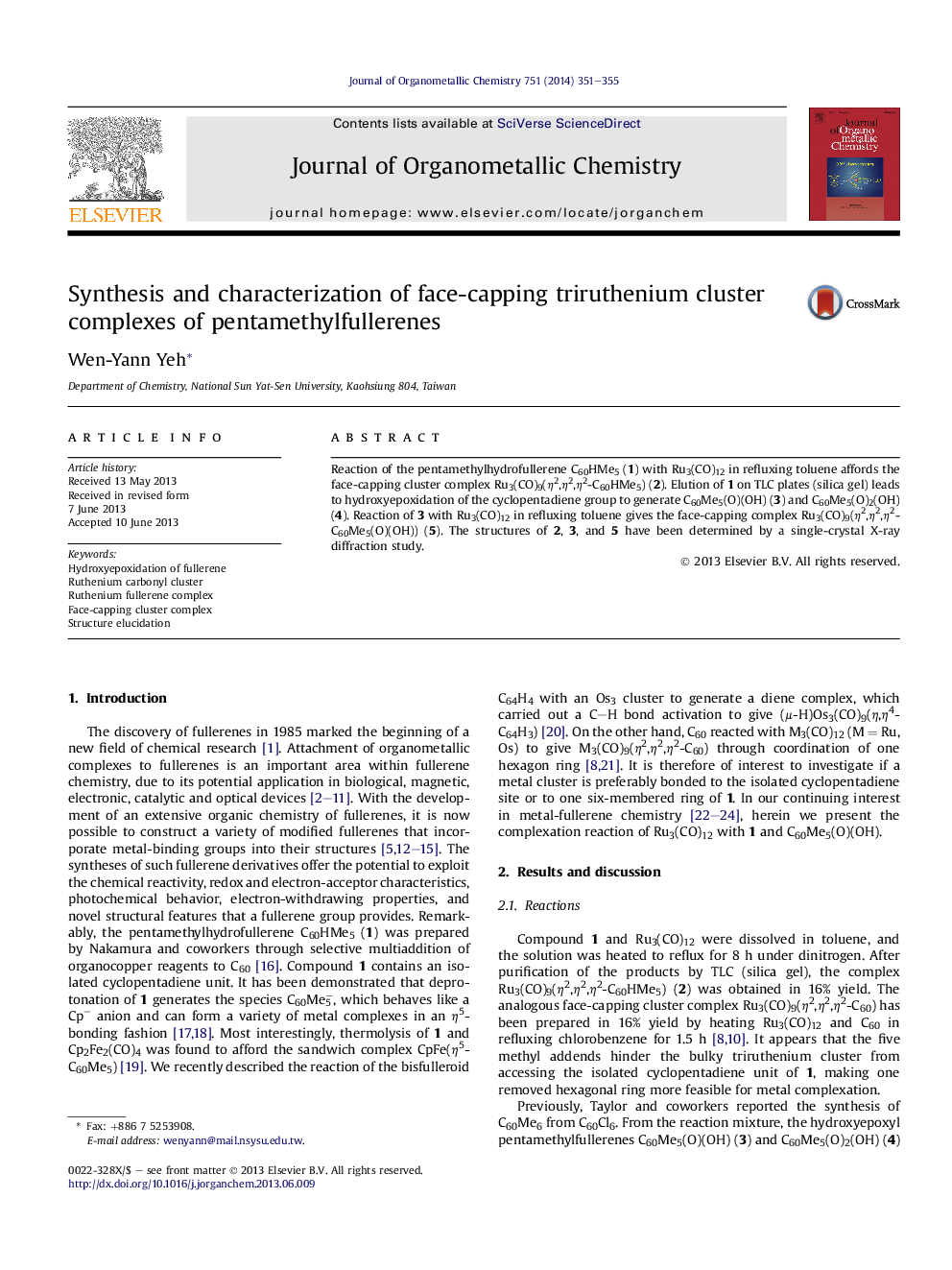| Article ID | Journal | Published Year | Pages | File Type |
|---|---|---|---|---|
| 1324286 | Journal of Organometallic Chemistry | 2014 | 5 Pages |
•Decomposition of C60Me5H on silica gel produces C60Me5(O)(OH) and C60Me5(O)2(OH).•Reaction of Ru3(CO)12 and C60Me5H affords Ru3(CO)9(η2,η2,η2-C60HMe5).•Reaction of Ru3(CO)12 and C60Me5(O)(OH) generates Ru3(CO)9(η2,η2,η2-C60Me5(O)(OH)).•One hexagon of C60Me5H or C60Me5(O)(OH) is capping the triruthenium face.
Reaction of the pentamethylhydrofullerene C60HMe5 (1) with Ru3(CO)12 in refluxing toluene affords the face-capping cluster complex Ru3(CO)9(η2,η2,η2-C60HMe5) (2). Elution of 1 on TLC plates (silica gel) leads to hydroxyepoxidation of the cyclopentadiene group to generate C60Me5(O)(OH) (3) and C60Me5(O)2(OH) (4). Reaction of 3 with Ru3(CO)12 in refluxing toluene gives the face-capping complex Ru3(CO)9(η2,η2,η2-C60Me5(O)(OH)) (5). The structures of 2, 3, and 5 have been determined by a single-crystal X-ray diffraction study.
Graphical abstractThe complexes Ru3(CO)9(η2,η2,η2-C60HMe5) and Ru3(CO)9(η2,η2,η2-C60Me5(O)(OH)) have been prepared from the reaction of Ru3(CO)12 with C60HMe5 and C60Me5(O)(OH), respectively, through coordination of one hexagon of the fullerene to the Ru3 triangle.Figure optionsDownload full-size imageDownload as PowerPoint slide
